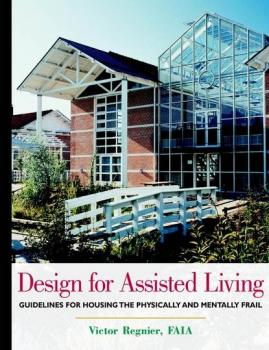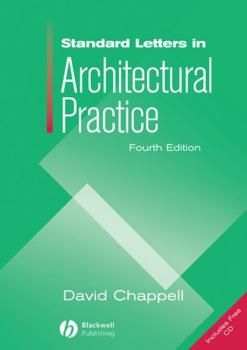ТОП просматриваемых книг сайта:
Архитектура
Различные книги в жанре Архитектура, доступные для чтения и скачиванияАннотация
Today’s trend towards the renewal of cities, sociable places, higher standards of architecture and sustainable city centre living is the business of urban design. In Britain, effective urban design is now at the forefront of government policy. However, even when the goals are clear, how do you make a start? If you are a planner, an elected councillor, or a developer what do you have to do on a day-to-day basis? In particular, how do you handle design within the planning process and ensure it is connected to other aspects of policy? How do you maintain this good practice as a matter of course? Tony Hall offers solutions not through idealised prescriptions but by setting out practical action based on what has been achieved on the ground. Uniquely amongst texts on this subject, the book draws upon his combination of both professional and political experience. This accessible and highly illustrated book shows how to: focus the organisation on design incorporate design principles into policy make design briefing effective prepare for successful negotiation
Аннотация
The new student edition of the definitive reference on landscape architecture Landscape Architectural Graphic Standards, Student Edition is a condensed treatment of the authoritative Landscape Architectural Graphic Standards, Professional Edition. Designed to give students the critical information they require, this is an essential reference for anyone studying landscape architecture and design. Formatted to meet the serious student's needs, the content in this Student Edition reflects topics covered in accredited landscape architectural programs, making it an excellent choice for a required text in landscape architecture, landscape design, horticulture, architecture, and planning and urban design programs. Students will gain an understanding of all the critical material they need for the core classes required by all curriculums, including: * Construction documentation * Site planning * Professional practice * Site grading and earthwork * Construction principles * Water supply and management * Pavement and structures in the landscape * Parks and recreational spaces * Soils, asphalt, concrete, masonry, metals, wood, and recreational surfaces * Evaluating the environmental and human health impacts of materials Like Landscape Architectural Graphic Standards, this Student Edition provides essential specification and detailing information on the fundamentals of landscape architecture, including sustainable design principles, planting (including green roofs), stormwater management, and wetlands constuction and evaluation. In addition, expert advice guides readers through important considerations such as material life cycle analysis, environmental impacts, site security, hazard control, environmental restoration and remediation, and accessibility. Visit the Companion web site: wiley.com/go/landscapearchitecturalgraphicstandards
Аннотация
Golf course construction continues to burgeon in the United States, Asia, and around the world. This book meets the needs of practicing landscape architects and other practicing professionals involved in the design or re-design of golf courses. Each classic hole is described in terms relevant to the designer including its basic design, its maintenance, and its impact on the golfer's game. Three samples accompany each classic hole illustrating varying replications and how those replications were appropriated for the new course. Graves and Cornish are two of the most famous and respected golf course architects in the United States, who have designed or remodeled a combined 1,000+ courses, taught more than 60 seminars on golf course design, and are both past presidents of the American Society of Golf Course Architects.
Аннотация
This complete guide to the evaluation, selection, and use of sustainable materials in the landscape features strategies to minimize environmental and human health impacts of conventional site construction materials as well as green materials. Providing detailed current information on construction materials for sustainable sites, the book introduces tools, techniques, ideologies and resources for evaluating, sourcing, and specifying sustainable site materials. Chapters cover types of materials, both conventional and emerging green materials, environmental and human health impacts of the material, and detailed strategies to minimize these impacts. Case studies share cost and performance information and lessons learned.
Аннотация
Destined to become the defining work on the subject, this timely reference addresses the single fastest growing segment of the senior living industry – assisted living for those who are unable to live independently but who do not need intensive nursing home care, meals, housekeeping, or twenty-four hour access to medical assistance. Victor Regnier?s visually rich guide includes dozens of design solutions from successful assisted living facilities along with fifteen case studies from the U.S. and Europe. The book also covers recent developments in the industry including major changes in financing, growth of dementia, and interest in aging-in-place. All in all, this is the most comprehensive guide to assisted living design that you'll find in any single volume.
Аннотация
Urban sprawl is one of the most important types of land-use changes currently affecting Europe. It increasingly creates major impacts on the environment (via surface sealing, emissions by transport and ecosystem fragmentation); on the social structure of an area (by segregation, lifestyle changes and neglecting urban centres); and on the economy (via distributed production, land prices, and issues of scale). Urban Sprawl in Europe: landscapes, land-use change & policy explains the nature and dynamics of urban sprawl. The book is written in three parts. Part I considers contemporary definitions, theories and trends in European urban sprawl. In part II authors draw upon experiences from across Europe to consider urban sprawl from a number of perspectives: Infrastructure-related sprawl, such as can be seen around Athens; Sprawl in the post-socialist city, as typified by Warsaw, Leipzig and Ljubljana; Decline and sprawl, where a comparative analysis of Liverpool and Leipzig shows that sprawl is not confined to expanding cities; Sprawl based on the development of second homes as found in Sweden, Austria and elsewhere. In part III a formal qualitative model of sprawl is developed. Policies for the control of urban sprawl and the roles of different stakeholders are considered. Finally, a concluding chapter raises questions about the nature and dynamics of these new urban landscapes and their sustainability.
Аннотация
This book provides over 300 standard letters for architects and contract administrators to use at all stages of contract administration. The letters are grouped into sections which correspond with the RIBA Plan of Work: the aim is to cover all the common situations encountered in practice. This Fourth Edition has been revised to take account of the extensive changes to virtually the whole of the JCT suite of building contracts. Unless otherwise stated, all letters are suitable for use with: · JCT Standard Building Contract (SBC) · JCT Intermediate Building Contract (IC) · JCT Intermediate Building Contract with contractor’s design (ICD) · JCT Minor Works Building Contract (MW) · JCT Minor Works Building Contract with contractor’s design (MWD) · JCT Design and Build Contract (DB) · GC/Works/1 (1998) With Quantities Contract The latest edition also takes account of the CDM Regulations 2007, the revised RIBA Code of Conduct and its associated guidance notes, and the RIBA standard agreements for the appointment of an architect issued in 2007. Architects and contract administrators spend a great deal of time writing letters of various types. Many of them are routine and repetitive in character, but they require proper consideration if potentially dangerous liability situations are to be avoided. The book will be of use not only to architects and contract administrators but also to project managers and employers’ agents.
Аннотация
Architects and contract administrators spend a great deal of time writing letters of various types. Many of them are routine and repetitive in character, but they require proper consideration if potentially dangerous liability situations are to be avoided. This book provides some 285 standard letters for use at all stages of project administration. To assist the user, they are grouped into sections which correspond with the RIBA Plan of Work: the aim is to cover all the common situations encountered in practice. The book has been revised to take account of the latest contract revisions and many letters have been added. Unless otherwise stated, all letters are suitable for use with: JCT 98 WCD 98 IFC 98 MW 98 GC/Works/1 (1998) The latest edition also takes account of the three new RIBA Standard Forms of Agreement for Appointment of an Architect: SFA/99, CE/99 and SW/99 Although primarily written for architects and contracts administrators, the book will also be of use to project managers and employers’ agents under WCD 98. Contractors will also find much of interest.
Аннотация
The CSI Sustainable Design and Construction Practice Guide is a compilation of information and recommended best practices for those who participate in the design and construction of commercial-level sustainable facilities. It offers guidelines and standards for applying sustainable design and construction principles in practical terms. This Practice Guide includes an overview of sustainable design standards and rating systems; an overview of green products and systems, and how to evaluate them; the lifecycle of a building; and the roles and responsibilities of members of the design and construction team.
Аннотация
Written by two leading experts in the field this essential volume offers a step-by-step guide to understanding and evaluating the goals, risks and the rewards of starting a firm. Covers the basics of firm organisation, personnel requirements, legal considerations, fee setting, marketing issues and the essentials of strategic and business plans Addresses how to get started including how to create your first business plan, evaluate initial needs and costs, create a budget and a produce a list of action items to get started This volume is practical, applied, concise, portable, affordable and user-friendly










